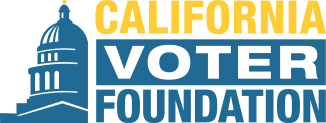Dispelling misinfo about length of tally
Excerpt:
The Close Count Transparency Project: is a tracker created by the California Voter Foundation that provides daily updates on the results of 11 competitive U.S. House races and seven state legislative races, as well as the statewide vote count status. The tool tracks candidates’ vote share, votes counted and the number of unprocessed ballots in each county the districts cover.
Why so slow? With a huge influx of ballots arriving all at once, they all must move through every step of the counting process that cannot be sped up. For example, in this past election cycle, more than 126,000 ballots in California needed to be “cured” — they had been rejected for missing or mismatched signatures and voters have time to submit a form to verify their signatures. The widespread use of vote-by-mail also slows the vote count.
Why it matters? By making the vote count more transparent, the close contest tracker aims to inoculate against unfounded conspiracy theories about election fraud in California.
- - - - - - - - -
While voters and campaigns want to see results sooner, it is particularly challenging in California, Alexander said.
The state is home to more than 22 million registered voters, according to the state Secretary of State’s office. As of Tuesday afternoon, a total of 15 million ballots had been counted — a number bigger than the populations of 46 other states, Census data shows.
California has also made it easier for voters to cast their ballots in recent years. A 2021 lawmade universal vote-by-mail permanent in California, meaning every registered voter receives a mail-in ballot roughly a month before Election Day and the ballots are counted as long as they arrive at county elections offices within seven days after Election Day. In the March primary, almost 90% of all voters voted by mail, according to the Secretary of State.
The widespread use of vote-by-mail slows down the vote count, Alexander said, because they take longer to process.
“We have to open the envelopes, we have to verify the signature, and all of those things before we can actually accept that ballot,” said Secretary of State Shirley Weber in a press conference last week.
Additionally, election officials have to first complete counting mail-in ballots before they move onto ballots cast by voters who register the same day they voted to make sure no voter votes twice, said Jesse Salinas, president of the California Association of Clerks and Election Officials and clerk-recorder in Yolo County. The number of same-day registered voters has grown over the years, further slowing down the vote count, he said.
But the slow vote count is also because races are closer than more than a decade ago, Alexander said. The state’s independent redistricting commission drew more competitive districts after the 2020 Census, she said, and the top-two primary process was designed to boost candidates who could appeal to a broader range of voters in the general election.
Between 2002 and 2010, before voters approved the independent redistricting commission, there was an average of one or two close congressional races per general election, Alexander said. But following the 2011 redistricting and the 2012 adoption of the top-two primary, there was an average of five close contests per election cycle, she said.
“People would be less patient with our long vote count if we had more decisive victories, but we don’t,” she said.
Still, county election officials could benefit from more staffing and funding for better equipment, Alexander said. Kern County, for example, has acquired high-speed ballot scanners to tabulate votes faster, she said. As of Tuesday, Kern had processed nearly 280,000 ballots and had only about 8,500 to go.
The state could also benefit from spending big on voter outreach, urging voters to mail in their ballots sooner, which would help county officials pre-process more ballots and reduce the workload post-election, Alexander said.
But more importantly, she said, the state should allow voters to opt out of vote-by-mail if they want, although she acknowledged that under current law, voters have the option to cast the ballot they received in the mail in person instead.
“A lot of people don’t want to vote by mail, and then you are stuck with this ballot, and that confuses voters,” she said. (Full Story)

